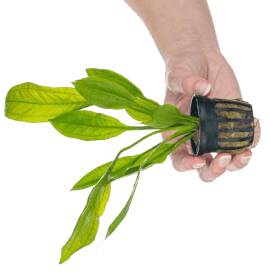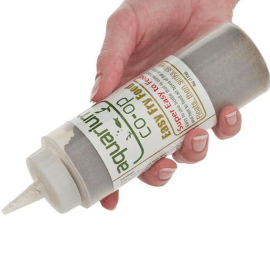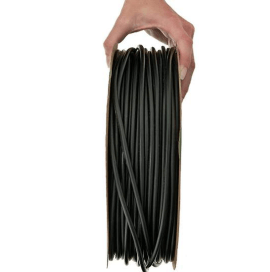CO2 in Planted Aquariums: Pros and Cons to Consider
In the planted tank hobby, you may have heard of two types of aquariums: high tech tanks that inject carbon dioxide (CO2) gas and low tech tanks that do not. CO2 gas is often touted as the magic key for causing plants to grow insanely fast and algae to disappear without a trace. Let’s talk about what CO2 actually does for aquarium plants, as well as some of the pros and cons of using it.
CO2 is Used for Photosynthesis
Have you ever heard the saying “carbon is the backbone of life”? That phrase is not just true for animals like you and me, but it’s also true for plants as well. Plants need carbon to conduct photosynthesis and produce food for themselves. This is a basic requirement, regardless whether or not CO2 gas is injected into the aquarium. In a low tech tank, plants utilize the 2-3 ppm (parts per million) of CO2 that naturally comes from surface gas exchange and animal respiration. Some plants are even able to use carbonate and bicarbonate compounds (KH) within the water as a source of carbon for photosynthesis, but this requires more energy from the plant compared to using CO2 gas. In a high tech aquarium, supplemental CO2 is diffused into the aquarium to provide an abundance of carbon “food” for plants and encourage faster growth. When combined with proper lighting and fertilization, CO2 injection can give plants the absolute best chance at thriving and growing quickly in an aquarium.

When aquarium plants have plenty of CO2 to photosynthesize, they can produce so much oxygen in the water that the leaves begin visibly “pearling” with bubbles of oxygen.
CO2 Lowers pH
When dissolving CO2 into water (H2O), a small amount of carbonic acid (H2CO3) is formed. This mild acid has the effect of lowering the pH of your aquarium water. If the pressurized CO2 is shut off for a long enough period, the pH will begin to increase again as the excess CO2 is forced out of the water. This phenomenon is one of the reasons why it is important to use a timer in order to run CO2 injection when lights are on, but not when the tank is dark. When the plants receive light, they consume CO2 to photosynthesize and create oxygen. At night when there is no light available and plants are not able to photosynthesize, they consume oxygen and release CO2 as part of the respiration process. In a planted tank with fish and invertebrates, the animals also emit CO2 as they breathe. Therefore, injecting CO2 at nighttime is inefficient and can potentially lead to excessive levels of CO2 that cause a dramatic drop in pH.
CO2 Can Affect Fish Health
Some fish species (such as those from certain parts of the Amazon basin) prefer more acidic water, so adding CO2 is one way to help lower the pH slightly when needed. However, too much CO2 can be detrimental in the fish keeping hobby. Excessive amounts of CO2 in aquarium water can cause fish to gasp at the surface or ultimately suffocate if the problem is not corrected. If you suspect that your fish tank has an overdose of CO2, increased aeration using an air stone can help alleviate this problem. A CO2 indicator or CO2 test kit can help you measure how much CO2 is in the water and determine if your fish are in danger. Both types of tests use a liquid reagent to determine CO2 levels.

The color in this CO2 drop checker reacts to the pH of the aquarium water, which helps to track the amount of CO2.
CO2 Helps Limit Excessive Algae Growth
The more light you give a planted tank, the more plants have the ability to grow and thrive, but they will also require additional nutrients to match the intensity of the light. When the lighting, nutrient, and CO2 levels in the aquarium are not matched up, the tank is not “balanced” and plant health may be adversely affected. If plants are struggling to survive, algae is likely to take advantage of the situation and grow out of control. If your aquarium is limited by CO2, adding CO2 injection can improve plant health and growth tremendously when combined with appropriate lighting and good fertilizer. When plants are thriving with all the necessary elements they need, algae stands little chance of outcompeting the plants for nutrients and light.
How CO2 Enters Water in Nature
While it may seem unnatural to use equipment to inject CO2 gas into aquarium water, many of the aquatic plants in the trade originate from places where water is quite rich in CO2 naturally. Spring water can become saturated with CO2 at spring heads where the water comes up from beneath Earth’s surface. The type of groundwater is highly saturated in CO2 because it has been exposed to a continuous release of organic compounds combined with no surface agitation.
In certain bodies of water with naturally low pH and KH buffer, CO2 is able to freely enter the water at a high rate. For instance, this can happen in water with a subsurface of sandstone that is made of silicates because no carbonates are present to neutralize the carbonic acid from CO2. The pH remains low and the CO2 stays concentrated, allowing plants to grow abundantly. On the other hand, limestone is mostly made of calcite and aragonite, which is high in carbonates (KH). Limestone greatly buffers the water by neutralizing carbonic acid and raising the pH. CO2 is less highly concentrated in these bodies of water, so different species of plants have developed to grow in these conditions.
Other plants in the trade originate from areas where their natural environment is partially terrestrial, allowing the plants to gain access to unlimited CO2 in the air. These may not be truly aquatic species since they grow above water, but many are able to grow submerged underwater in a CO2-rich environment so that we can enjoy them in our high tech aquariums.

Certain plants, like many red plants and carpeting plants, thrive the best in high tech tanks with strong lighting, high fertilizer dosing, and CO2 injection.
CO2 injection is useful for speeding up plant growth, keeping plants that require high lighting, and converting plants from submersed to emersed growth. It also makes more sense to add to a densely planted aquarium than a sparsely planted one that doesn’t use as much carbon. Just be prepared to invest the extra cost and effort it takes to maintain a high tech planted aquarium.
For beginners, we highly recommend that you start with a low tech planted aquarium without CO2 injection. In general, low tech tanks are cheaper and easier to maintain, which is important while you are still learning how to keep plants alive underwater. In fact, the majority of aquatic plants we sell at Aquarium Co-Op do not rely in injected CO2 because we want to make them accessible to as many people as possible. Peruse our collection of hardy, beginner-friendly species to get started with planted tanks today.




